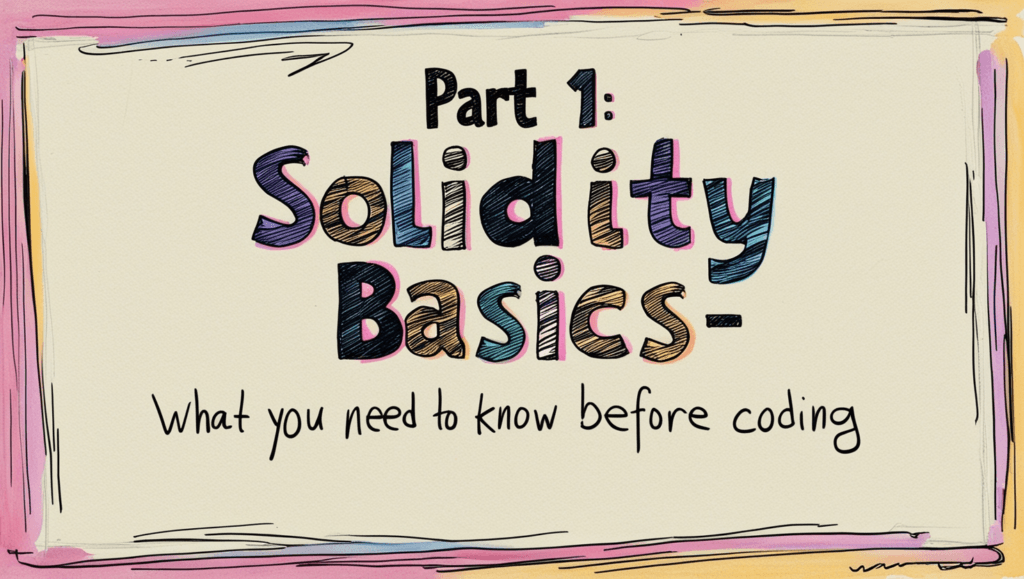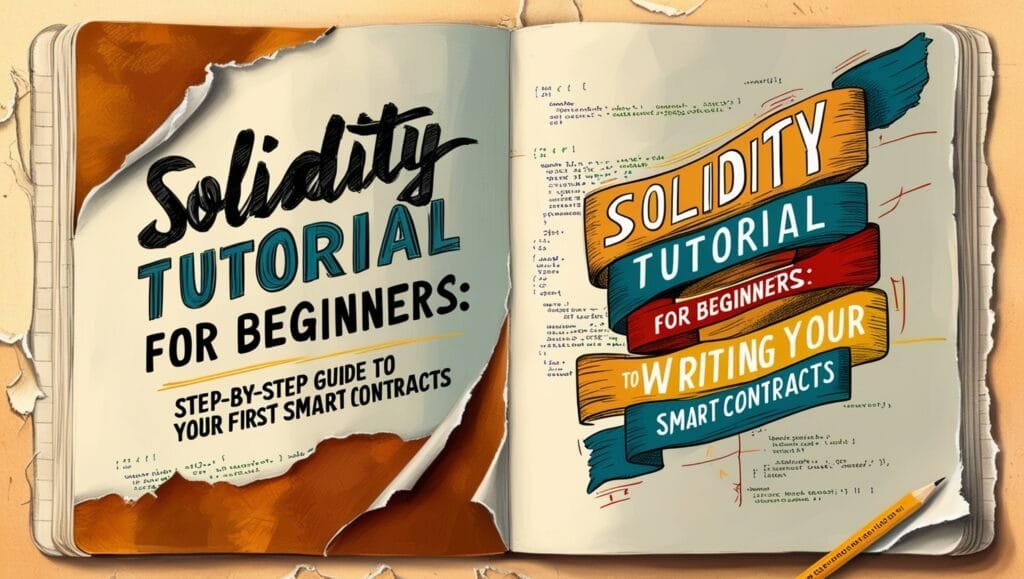Solidity Tutorial for Beginners : Hey there! If you’re curious about Solidity and smart contracts but don’t know where to start, you’ve landed in the right spot! Whether you’re brand new to coding or just diving into blockchain development, this guide will walk you through Solidity basics in the simplest and most human-friendly way possible. Consider this your crash course on how to write smart contracts from scratch, without getting overwhelmed.
In this first part, I’m going to break down what you’ll learn, give you a taste of Solidity, and set you up to confidently jump into the coding world. Let’s get started!
What the Heck is Solidity, Anyway?
Solidity is the programming language used to write smart contracts—those cool pieces of code that run on the Ethereum blockchain (and other blockchains like Binance Smart Chain, Avalanche, etc.). A smart contract is like a digital agreement that automatically executes when certain conditions are met. Think of it like a vending machine: you insert money, select a product, and the machine delivers it—all without anyone manually stepping in.
Smart contracts allow for transactions to happen without middlemen, making them super efficient and secure. If you’ve ever heard of NFTs, DeFi, or crypto trading, you’ve already encountered smart contracts in action.
Why should you care? Well, blockchain tech is growing fast, and so is the demand for people who know how to write smart contracts. Plus, who wouldn’t want to create decentralized apps (dApps) and be part of the next big tech revolution?
What You’ll Learn in This Solidity Tutorial Series

Here’s what you can expect from this Solidity series. I’ll guide you through the basics and build your knowledge step by step. By the time you finish, you’ll be able to write, test, and even deploy your own smart contracts. Here’s a sneak peek at the topics we’ll cover:
1. Introduction to Solidity and Blockchain
- What Solidity is and how it fits into blockchain tech.
- Why smart contracts are important (and cool).
- Setting up your environment so you can start coding.
2. Writing Your First Smart Contract
- Understanding the basic structure of a smart contract.
- How to declare variables and data types in Solidity.
- Writing and deploying your very first contract (don’t worry—it’s simple!).
3. Solidity Functions and Logic
- How to create functions to get stuff done in your contract.
- Using
if-elseconditions and loops to build logic. - Understanding function visibility and when to use them.
4. Handling Data: Arrays, Mappings, and Structs
- How to store and manage data inside your contract.
- Using arrays, mappings, and structs to keep things organized.
- Real-life examples of how these are used in smart contracts.
5. Access Control and Modifiers
- What function modifiers are and how to control access to certain functions.
- How to restrict actions so only certain people (like the contract owner) can perform specific actions.
- Preventing unwanted tampering with your contract.
6. Events and Blockchain Logs
- What events are and why they matter in Solidity.
- How to emit events and log important information to the blockchain.
7. Inheritance and Contract Organization
- Using inheritance to keep your code neat and efficient.
- Structuring your code for easy reuse.
- Examples of inheritance in action within smart contracts.
8. Smart Contract Security
- Common security issues in Solidity (and how to avoid them).
- Writing secure code to protect against hacks like reentrancy attacks.
9. Gas and Contract Efficiency
- What gas is and why it matters for every action you take on the Ethereum blockchain.
- Tips for optimizing your smart contract to save on gas fees.
10. Testing and Deploying Smart Contracts
- How to test your contract to make sure it works as expected.
- Using tools like Remix, Hardhat, or Foundry.
- Deploying your contract on Ethereum or testnets like Sepolia or Goerli.
Part 1: Solidity Basics – What You Need to Know Before Coding
Alright, before we get too far ahead, let’s quickly touch on what Solidity is all about. If you’re totally new to programming, don’t sweat it! Solidity is actually pretty straightforward, especially if you’ve dabbled with languages like JavaScript or Python.

Solidity: The Language of Smart Contracts
Solidity is a high-level programming language, meaning it’s pretty readable by humans. It’s used to write self-executing agreements (smart contracts) that run on the Ethereum blockchain. Ethereum is a decentralized platform where these contracts live, and once they’re on the blockchain, they can’t be altered, which is one reason they’re so secure.
How Does the Blockchain Fit In?
Imagine a giant shared notebook that everyone in the world can see, but nobody can erase anything from it. Every time something happens (a transaction, a smart contract, etc.), it’s written into this notebook in permanent ink. This is basically what the blockchain is—an open ledger of transactions.
Your Solidity contracts live on this blockchain, so once you deploy them, they can execute themselves whenever the right conditions are met. There’s no central authority—just you and your code.
Setting Up Your Solidity Coding Environment
Before we start writing any code, we need to set up an environment where you can practice. Luckily, it’s super easy.
Remix IDE: The Easy Way to Code Smart Contracts
Remix is a browser-based Integrated Development Environment (IDE) that lets you write, test, and deploy Solidity smart contracts without needing to install anything. It’s beginner-friendly and perfect for quick experimentation.
Here’s how to get started:
- Head over to Remix IDE in your browser.
- Start a new file and select “Solidity” as the language.
- You’re now ready to write your first contract!
Later, we’ll get into more advanced setups like Hardhat and Foundry, but for now, Remix is all you need.
// SPDX-License-Identifier: MIT
pragma solidity ^0.8.0;
contract HelloWorld {
string public message;
constructor() {
message = "Hello, Blockchain!";
}
function setMessage(string memory newMessage) public {
message = newMessage;
}
}Breaking Down the Code:
pragma solidity ^0.8.0;tells the compiler what version of Solidity we’re using. We want version 0.8.0 or higher.contract HelloWorldis where we define our smart contract.string public message;is a variable to store a message.constructor()sets the initial message when the contract is deployed.setMessage()is a function that allows anyone to update the message.
And that’s it! This simple contract stores a string (our message) and lets anyone change it by calling the setMessage function. Once deployed on the blockchain, the message will be accessible to anyone, and the contract will update the message whenever someone calls the function.
What’s Next? Keep Exploring!
In the next part of this series, we’ll dive deeper into Solidity variables, functions, and logic. We’ll also start building more complex smart contracts step by step.
But for now, play around with Remix, try tweaking the HelloWorld contract, and see what happens. Change the message, experiment with the code, and have fun with it. Learning Solidity is all about hands-on practice, so the more you experiment, the faster you’ll pick it up.
Coming Up Next:
- Writing your first custom smart contract.
- Understanding how Solidity handles functions, data types, and logic.
- Tips and tricks for optimizing your smart contracts.
See you in the next tutorial!


